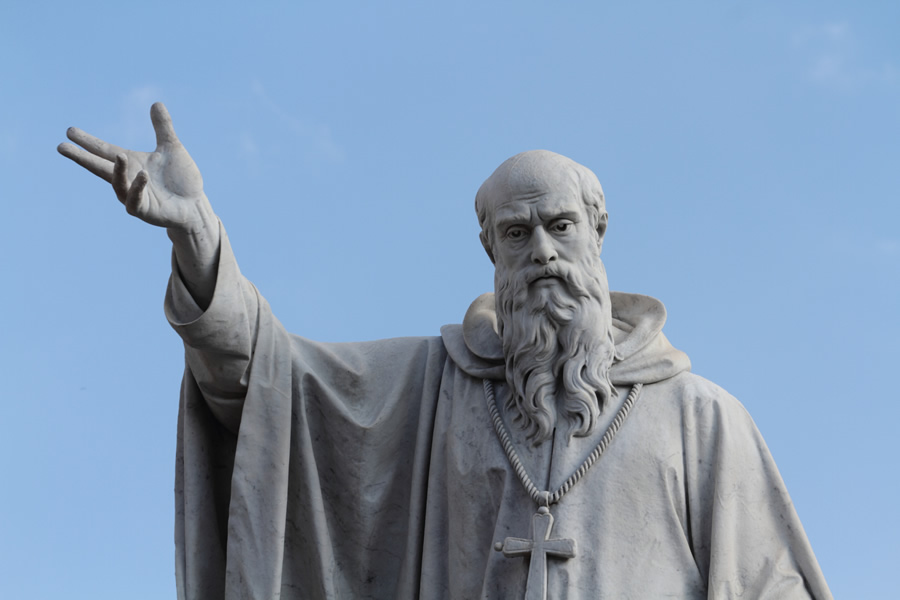
Saint Benedict of Nursia
by Rev. Gabriel Baltes, O.S.B. | 07/02/2023 | A Message from Our PastorDear Parishioners,
St. Benedict, in full Saint Benedict of Nursia, Nursia also spelled Norcia, (born c. 480 CE, Nursia [Italy]—died c. 547, Monte Cassino; feast day July 11, formerly March 21), founder of the Benedictine monastery at Monte Cassino and father of Western monasticism; the Rule that he established became the norm for monastic living throughout Europe. In 1964, in view of the work of monks following the Benedictine Rule in the evangelization and civilization of so many European countries in the Middle Ages, Pope Paul VI proclaimed him the patron saint of all Europe.
St. Benedict of Nursia
The only recognized authority for the facts of Benedict’s life is book 2 of the Dialogues of St. Gregory I, who said that he had obtained his information from four of Benedict’s disciples. Though Gregory’s work includes many signs and wonders, his outline of Benedict’s life may be accepted as historical. He gives no dates, however. Benedict was born of good family and was sent by his parents to Roman schools. His life spanned the decades in which the decayed imperial city became the Rome of the medieval papacy. In Benedict’s youth, Rome under Theodoric still retained vestiges of the old administrative and governmental system, with a Senate and consuls. In 546 Rome was sacked and emptied of inhabitants by the Gothic king Totila, and, when the attempt of Emperor Justinian I to reconquer and hold Italy failed, the papacy filled the administrative vacuum and shortly thereafter became the sovereign power of a small Italian dominion virtually independent of the Eastern Empire.
Benedict thus served as a link between the monasticism of the East and the new age that was dawning. Shocked by the licentiousness of Rome, he retired as a young man to Enfide (modern Affile) in the Simbruinian hills and later to a cave in the rocks beside the lake then existing near the ruins of Nero’s palace above Subiaco, 64 km (40 miles) east of Rome in the foothills of the Abruzzi. There he lived alone for three years, furnished with food and monastic garb by Romanus, a monk of one of the numerous monasteries nearby.
When the fame of his sanctity spread, Benedict was persuaded to become abbot of one of these monasteries. His reforming zeal was resisted, however, and an attempt was made to poison him. He returned to his cave, but again disciples flocked to him, and he founded 12 monasteries, each with 12 monks, with himself in general control of all. Patricians and senators of Rome offered their sons to become monks under his care, and from these novices came two of his best-known disciples, Maurus and Placid. Later, disturbed by the intrigues of a neighboring priest, he left the area, while the 12 monasteries continued in existence.
Monte Cassino: Benedictine monastery
A few disciples followed Benedict south, where he settled on the summit of a hill rising steeply above Cassino, halfway between Rome and Naples. The district was still largely pagan, but the people were converted by his preaching. His sister Scholastica, who came to live nearby as the head of a nunnery, died shortly before her brother. The only certain date in Benedict’s life is given by a visit from the Gothic king Totila about 542. Benedict’s feast day is kept by monks on March 21, the traditional day of his death, and by the Roman Catholic Church in Europe on July 11.
BACK TO LIST BACK